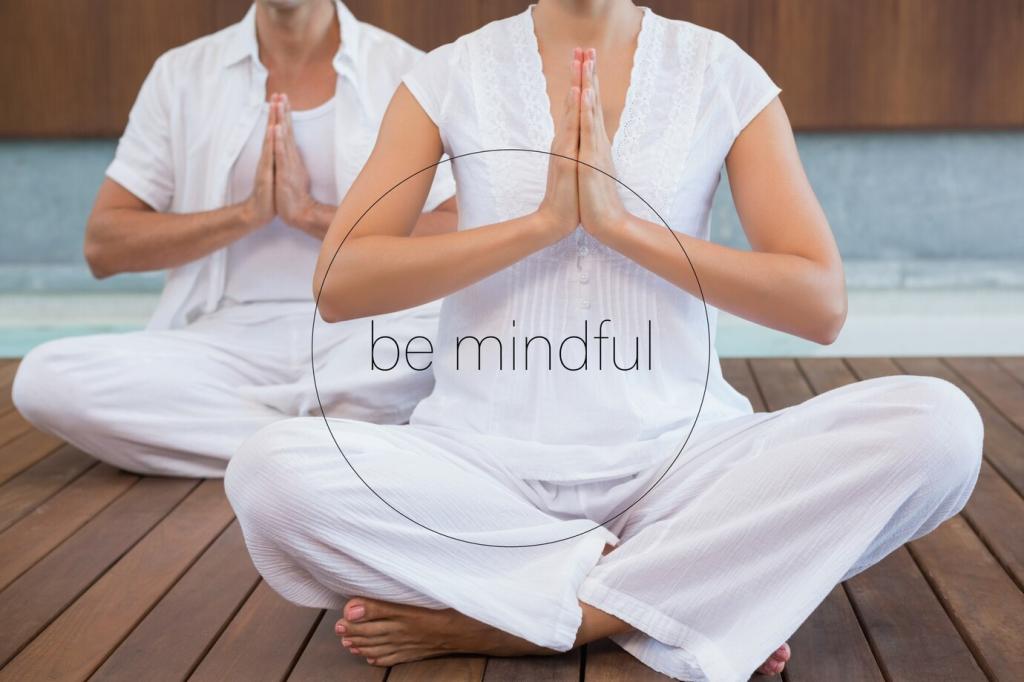Exploring the Different Styles of Yoga and Meditation
Chosen theme: Exploring the Different Styles of Yoga and Meditation. Welcome to a warm, practical guide that helps you navigate flows, alignments, and timeless contemplative traditions—so you can build a practice that fits your life and lights you up.
Philosophy and Intention
Every style rests on a core aim—strength, stillness, compassion, clarity, or balance. When you understand a tradition’s purpose, you can align it with your goals, whether you want stress relief, deeper focus, or joyful movement.
Techniques, Sequencing, and Sensation
Styles differ in pacing, posture families, and focal points—flowing transitions, held shapes, or seated awareness. Notice how your body feels afterward: grounded, energized, introspective, or soothed. Let sensation guide your ongoing selections.
Lineage, Teachers, and Community
Lineages carry history and nuance, while modern teachers translate them for today. Try classes from varied instructors, ask questions, and notice which communities feel supportive. Share your discoveries below to help others explore confidently.

Alignment-Focused Journeys: Hatha, Iyengar, and Anusara
Hatha emphasizes accessible pacing, clear instructions, and mindful holds. Beginners learn fundamentals without overwhelm, while experienced practitioners revisit basics with new depth. One steady week of Hatha often restores confidence and quiet strength.



Gentle and Restorative: Yin, Restorative, and Yoga Nidra
Yin invites longer holds targeting fascia and joint health. Quiet shapes reveal hidden tension and invite patient release. Many readers describe a grounded calm after just three poses—tell us where you felt the biggest shift today.
Gentle and Restorative: Yin, Restorative, and Yoga Nidra
Restorative yoga uses generous props to cradle the body in comfort. Ten minutes in a supported fold can feel like an hour’s nap. If life feels loud, this practice whispers, “Rest is productive.” Subscribe for new restorative sequences.
Meditation Traditions: Mindfulness, Loving-Kindness, and Mantra
Mindfulness: Noticing Without Judgment
Mindfulness trains curious attention—sensations, thoughts, and breath arise and pass. A chef told us observing three mindful breaths before plating steadied his hands and service. Try it today and share what you notice in the pause.
Loving-Kindness: The Heart Expands
Loving-Kindness (Metta) repeats phrases of goodwill for self and others. Many find relational ease softens conflict. Begin with, “May I be safe.” Then extend outward. Comment with your favorite phrase to inspire our community’s practice.
Mantra: Sound as Focus
Mantra uses repeated words or syllables to stabilize attention. Whether ancient or personal, sound organizes the mind. A student’s daily ‘I return to calm’ became a lighthouse during finals. What phrase could guide your next challenge?
Breathwork Bridges: Pranayama Styles for Every Path
Box Breathing for Clarity
Inhale, hold, exhale, hold—equal counts steady the nervous system. A traveler used this at the gate and boarded centered instead of rushed. Practice four cycles now, then tell us how your mood shifted afterward.
Ujjayi for Flow
Whispered throat constriction creates an oceanic breath that anchors Vinyasa. The sound becomes a metronome, syncing movement and attention. Try three sun salutations with Ujjayi and note how your focus strengthens in transitions.
Nadi Shodhana for Balance
Alternate nostril breathing harmonizes left and right channels, easing mental fog and agitation. Before a tough meeting, five minutes can recalibrate. Share your preferred count so others can experiment with gentle, effective ratios.
From Sutras to Studios
Patanjali’s Yoga Sutras, Hatha texts, and meditation lineages inform today’s classes, apps, and retreats. Understanding history adds depth to practice. If a quote resonates, post it below and tell us how it guides your mat time.
Adaptation Without Dilution
Innovation can serve accessibility when rooted in respect. Ask who benefits, what is preserved, and how teachers credit sources. Share examples of classes that felt both modern and mindful of tradition to inspire thoughtful choices.
Ethics, Language, and Inclusion
Pronunciation, cultural context, and inclusive cues matter. Small choices—the words we use, props we offer, options we normalize—shape safety. Join the conversation: which cues or class norms helped you feel welcomed from day one?
Name your season’s focus: strength, recovery, stress relief, or creativity. Then choose styles accordingly—perhaps Vinyasa on energetic days and Yin midweek. Comment with your intention, and we’ll suggest a supportive mini-plan.
